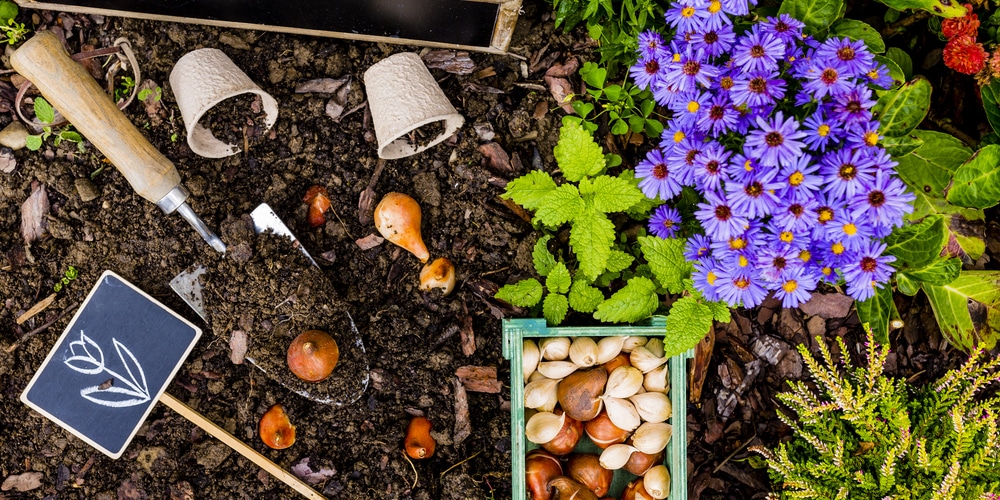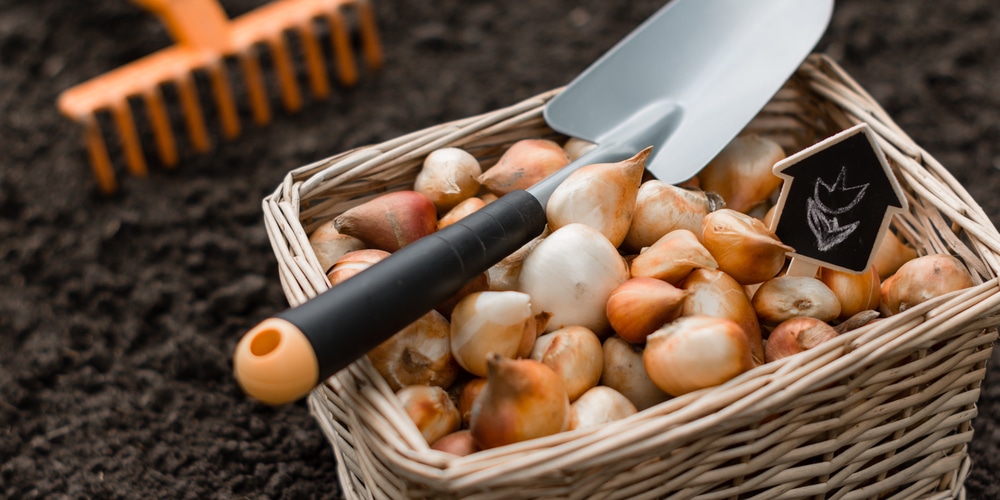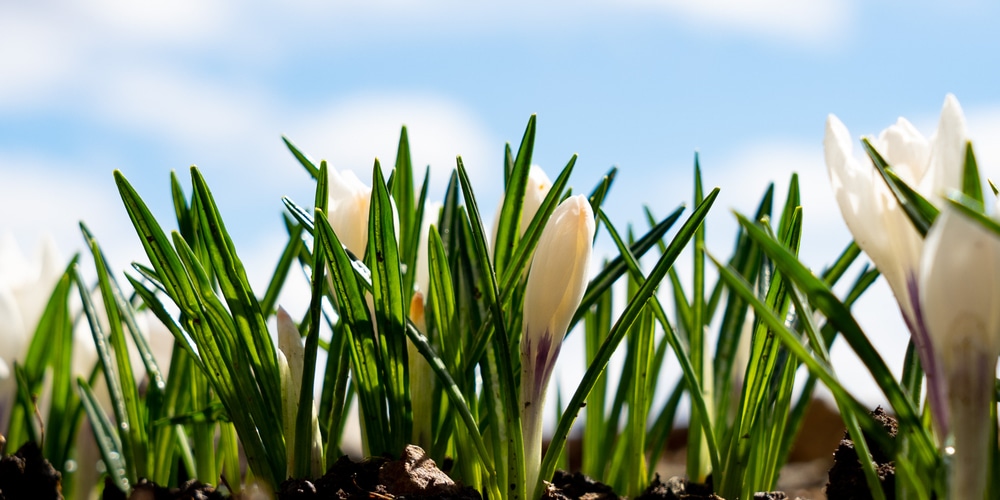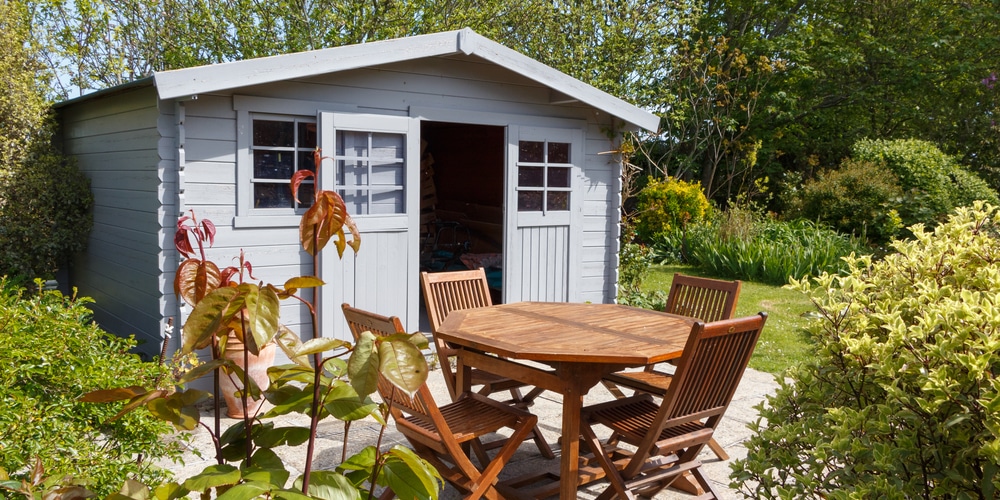Many flowering plants are grown from bulbs such as daffodils, tulips, and bluebells. But do bulbs have an expiration date? And how long can you keep bulbs for?
Bulbs need to be planted at the right time of year and shouldn’t be kept for more than twelve months. Some bulbs will grow if they are older, but the chances of growing a healthy blooming plant with older bulbs diminish.
If you’ve recently found a packet of bulbs that you forgot to plant, you may be wondering whether or not they will grow. This article will answer the question, ‘how long do bulbs last unplanted?’
How Long do Bulbs Last Unplanted?

Most gardeners would agree that bulbs can last for up to a year unplanted. However, there are a few things, such as the type of bulb and storage conditions, which will increase or decrease the lifespan of the bulbs.
If you find some bulbs that you forgot to plant, they may still grow. You can check that the bulbs haven’t gone bad and plant them in the springtime. Some bulbs can last for years if they are correctly stored, so it may be worth trying to grow older bulbs.
It’s worth noting that bulbs are different from seeds and won’t last as long unplanted. You don’t need to worry about seeds going bad as they are likely to grow, even if the packet says they are past their plant by date. Bulbs, on the other hand, have to be stored correctly. Some bulbs, such as flowering species, are delicate and might not last as long.
Spring Bulbs
Spring bulbs such as daffodils, snowdrops, tulips, and crocuses generally last the longest, providing they are stored correctly. These bulbs are tough and will last a year. Bulbs don’t have such a long lifespan as seeds because they contain nutrients and, if kept in the wrong conditions, can dry out completely or go moldy.
Bulbs are placed in the soil, and as the temperature rises, the flower will start to grow. To help unplanted bulbs survive, you need to recreate the same conditions as they would have in the soil.
How to Store Unplanted Bulbs?
Most bulbs need to be planted in the fall and will start to grow in the early spring. If you’ve bought bulbs at the wrong time of year or have missed planting at the right time, you can store your bulbs until next year. For example, if you buy bulbs or someone gives you some bulbs in the summer, it’s best to keep them until the fall rather than planting them at the wrong time of year.
Gardeners commonly decide to store bulbs rather than plant them if the frost has come early and the ground is frozen before they have been able to plant their bulbs. Don’t try to plant bulbs if the ground is frozen, as it will be too hard to dig and too cold for the bulbs. Instead, store the bulbs until the soil has thawed out.
Summer bulbs need to be planted in the early spring as they won’t grow over the winter. They can’t survive during a frost and can instead be stored until the right time of year for planting.
How to Tell Whether a Bulb Has Gone Bad?
If you have some bulbs you either forgot to plant or held off planting due to the weather conditions; you can check them over before planting. There are a few things to look for that would tell you whether the bulb is still good and likely to grow or whether it should be thrown in the trash.
The likelihood of a bulb going bad is a lot higher than with seeds. However, it’s easy to tell when a bulb isn’t likely to grow as it may feel soft, have signs of mold, or smell bad. Here are some things to look out for in bulbs:
Firmness
Healthy bulbs look plump and feel slightly firm. If you squeeze a bulb and it feels soft, it’s rotting on the inside. Often bulbs that have been stored too long will have dried out completely and will appear smaller. These signs indicate that a bulb has gone bad.
Smell
If a bulb smells bad, it’s likely started to rot on the inside and should be disposed of.
Look for Mold
Bulbs that have been stored in damp conditions will be more likely to rot and get moldy.
Test the Buoyancy
A great way to test whether a bulb is likely to grow or not is to see if it’s able to float. Bulbs that float have started to rot on the inside, which makes them lighter. If a bulb sinks, then it’s healthy and can be planted.
How to Store Bulbs?
If you have some bulbs that you’re unable to plant as it’s the wrong season, you can store them for up to a year. Bulbs need to be kept in a cool, dry place that’s 50 degrees. It’s best to keep bulbs in an area of your home that isn’t heated, such as the basement, garage, or shed. Some gardeners in hotter climates even keep their bulbs in the fried during the summer.
It would help if you also kept the bulbs in the dark; a cardboard box or paper bag works well. If you’re using a plastic container, it’s best to line it with newspaper to keep the bulbs dry. This will also help to keep the bulbs at a consistent temperature.
Bulbs can also be stored in peat moss to help keep them dry. They should be kept in the dark in a cool place. This is the best solution for summer bulbs as they require a slightly higher temperature than spring bulbs. When storing bulbs, it’s a good idea to check on them every couple of weeks to ensure they haven’t started to rot. Throw away any bulbs that have gone bad.
Conclusion
Bulbs can be stored for up to a year in the right conditions. You’ll need to take good care of your bulbs so that they don’t start to rot. It’s best to plant your bulbs as soon as possible rather than holding onto them. The longer bulbs are kept, the less likely they are to grow.


